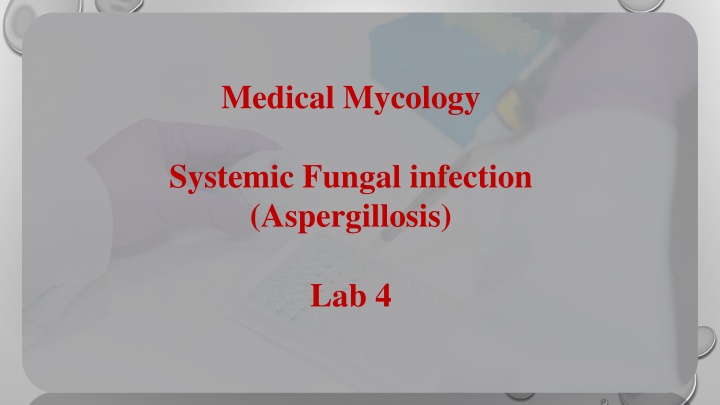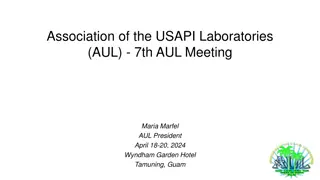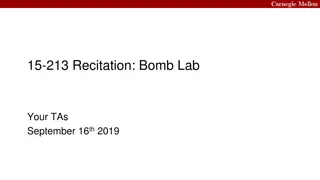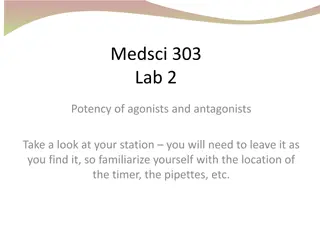
Aspergillosis: Symptoms, Types, and Treatment
Learn about Aspergillosis, a systemic fungal infection caused by Aspergillus fungi. Discover the symptoms, types (including ABPA and aspergilloma), and how it can affect the respiratory system. Find out how Aspergillosis can be contracted, common organisms causing it, and appropriate management strategies.
Download Presentation

Please find below an Image/Link to download the presentation.
The content on the website is provided AS IS for your information and personal use only. It may not be sold, licensed, or shared on other websites without obtaining consent from the author. If you encounter any issues during the download, it is possible that the publisher has removed the file from their server.
You are allowed to download the files provided on this website for personal or commercial use, subject to the condition that they are used lawfully. All files are the property of their respective owners.
The content on the website is provided AS IS for your information and personal use only. It may not be sold, licensed, or shared on other websites without obtaining consent from the author.
E N D
Presentation Transcript
Medical Mycology Systemic Fungal infection (Aspergillosis) Lab 4
Systemic Fungal infection Most systemic fungal infections are caused by Opportunistic fungal** pathogens Fungi that are nonpathogenic in the immunocompetent host, mostly exist as part of the normal flora in the upper respiratory tract. Common in immunocompromised hosts.
Examples of some organisms isolated most frequently from immunocompromised patients : Aspergillus spp (cause Aspergillosis) Candida spp. Cryptococcus spp
Aspergillosis What is Aspergillosis? Aspergillosis: Systemic infection caused by several types of Aspergillus fungi Aspergillus is usually found outdoors, in dead leaves, plants, soil or compost. It s occasionally found in moist environments indoors. How do you get an Aspergillus infection? It can also get into your body through a cut in your skin Most people breathe in Aspergillus spores every day without getting sick. Inhaling Aspergillus spores from the air can cause an allergic reaction or an infection in your sinuses or lungs. It can move to other parts of your body if your immune system can t fight off the infection.
Aspergillosis Many different species of the fungi Aspergillus can cause aspergillosis , such as: Aspergillus fumigatus, Aspergillus flavus, Aspergillus niger. The infection, usually affects the respiratory system and may lead to breathing problems. Cough Wheezing Coughing up blood Shortness of breath Chest pain Skin lesions
Types of Aspergillosis Allergic broncho-pulmonary aspergillosis (ABPA): Aspergillus causes inflammation in the lungs and allergy symptoms such as coughing and wheezing. Allergic Aspergillus sinusitis: Aspergillus causes inflammation in the sinuses
Aspergilloma: also called a fungus ball. , it is a ball of Aspergillus that grows in the lungs or sinuses. Certain chronic lung (pulmonary) conditions, such as tuberculosis ,can cause air spaces (cavities) to form in the lungs. When people with lung cavities are also infected with aspergillus, fungus mycelium may find their way into the cavities and grow into tangled masses (fungus balls) known as aspergillomas.
Types of Aspergillosis Invasive aspergillosis This is the most severe form of aspergillosis. It occurs when the infection spreads rapidly from the lungs to the brain, heart, kidneys or skin. Invasive aspergillosis occurs in people whose immune systems are weakened as a result of cancer chemotherapy, bone marrow transplantation or a disease of the immune system. Untreated, this form of aspergillosis may be fatal Cutaneous (skin) aspergillosis: Aspergillus enters the body through a break in the skin (for example, after surgery or a burn wound) and causes infection, usually in people who have weakened immune systems.
Aspergillosis Serological tests Galactomannan (GM) aspergillus specific antigen (polysaccharide,) found in the cell wall and released during the growth phase of invasive aspergillosis Can be detected in serum samples Highly immunogenic antigen (immunogen)*** ***Antigens that are capable of inducing an immune response via inducing Ab production
Diagnostic tests: (Serological tests) Useful in diagnosing systemic mycoses but less so in diagnosing other fungal infections. Fungal polysaccharides or proteins may be shed into body fluids during the course of infection, which can be detected using specific antibodies Require patient s body fluid such as: Blood, Cerebrospinal fluid CSF, Urine, Bronchoalveolar Lavage fluid (BALF)
Diagnostic tests: (Serological tests) Ab detection Diagnosis of systemic mycoses Assess the response to treatments Ag detection Useful during the early stage of infection (before producing Abs) Useful in patients with impaired immune system- Why? *the immune system in those patients often failed to produce antibodies
Why Serology? Ags and Abs are easier to detect compared to finding the organism directly Ags and Abs are produced in large quantities and can be found in body fluids such as: Blood, Cerebrospinal fluid CSF, Urine, Bronchoalveolar Lavage fluid (BALF) Rapid test, as the result can be obtained within few hours.

















